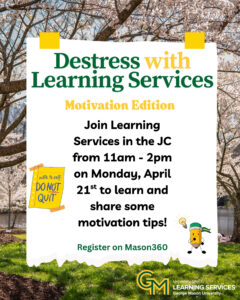AI in the Classroom
By Justin Dodgion | Friday, April 18th, 2025
 Did you know that approximately 25% of teachers in the U.S. use AI in “their instructional planning or teaching”?[1]In the New York Times article by TheLearning Network “What Students Are Saying About Teachers Using A.I. to Grade”[2], the loss of personal connection between teachers and students when AI is used for grading is discussed. If an evaluation is generated by a computer instead of a human, theaccuracy and contextualized feedback inthose grades for the development of young people is called into question. Many of those interviewed argue that the standards for students and teachers should be different, stating that student’s work is creative, and the grading process is reflective. Many teachers argued that AI gives teachers time to focus on other aspects of class management, but many students see the use of AI for grading as a betrayal. While this source focuses on the use of AI in High School classrooms, college is another frontier for AI in education.
Did you know that approximately 25% of teachers in the U.S. use AI in “their instructional planning or teaching”?[1]In the New York Times article by TheLearning Network “What Students Are Saying About Teachers Using A.I. to Grade”[2], the loss of personal connection between teachers and students when AI is used for grading is discussed. If an evaluation is generated by a computer instead of a human, theaccuracy and contextualized feedback inthose grades for the development of young people is called into question. Many of those interviewed argue that the standards for students and teachers should be different, stating that student’s work is creative, and the grading process is reflective. Many teachers argued that AI gives teachers time to focus on other aspects of class management, but many students see the use of AI for grading as a betrayal. While this source focuses on the use of AI in High School classrooms, college is another frontier for AI in education.
When the rapid integration of AI into services and industries is considered, it would not be far-fetched to envision a future when college professors’ use of AI for grading is the norm. Author Rahul Kumar explores aspects of this possible future in thearticle “Faculty members’ use of artificial intelligence to grade student papers: a case of implications”[3]. One concern that stands out in the article is the cost of college. Will student’s tolerance of the use of AI for grading be influenced by the fact that the classes they take cost them thousands? Another point that raises apprehension is the ambiguity of how the privacy of the content being graded would remain intact. Would original work done by students and their private information be added to the learning models for AI services?
Inside the George Mason University community, AI integration into K-12 schools has been explored by the The Center for Advancing Human-Machine Partnership. This office has been looking toward the future with a balanced perspective, equally taking into the account the benefits that teachers could experience, and thepotential damage that could be done to students.
In the CAHMP article, “AI in K-12 Education: What School Divisions Might Consider in Preparing for the Future”[4] the ways that teachers’ workflow could be streamlined are emphasized when authors Dr. Elizabeth Davis and Alyssa Barone say “Educators and administrators are beginning to use these types of AI in a variety of ways, including AI-enabled tools that support student learning, help teachers with lesson planning, and even help central office staff with decision-making for resource allocation.” Teachers already have a heavy workload and much to balance, so a more efficient workflow could potentially give them more bandwidth to spend quality time with students.
Davis and Barone are also keenly aware of the detrimental impacts of this technology. Many of the factors that they cite are the ways that, “U.S. education system is still reckoning with the digital divide, with low-income and students of color being less likely to have access to reliable internet and laptops.” The students and schools that have less funding will not have the same opportunities in the use of AI as schools that have a financial advantage. Another major problem pointed out inthe article is, “A study found that the most frequently used LLMs (e.g., ChatGPT and Claude) produce texts that portray minoritized individuals as subordinate to empowered groups or present them in stereotypical roles, upholding existing power structures and causing psychological harm to systemically marginalized individuals.” AI is a powerful resource, but when it comes to integrating this technology into learning environments, caution must be prioritized. Benefits to teachers must be balanced with the positive development and critical thinking skills of students.
To read more on the topic of AI as a grading tool, check out these articles:
[1] https://www.rand.org/pubs/research_reports/RRA134-25.html#:~:text=The%20results%20indicate%20that%2025%20percent%20of%20surveyed,mathematics%20teachers%20or%20elementary%20teachers%20of%20all%20subjects.
[2] https://www.nytimes.com/2024/12/05/learning/what-students-are-saying-about-teachers-using-ai-to-grade.html
[3] https://edintegrity.biomedcentral.com/articles/10.1007/s40979-023-00130-7
[4] https://cahmp.gmu.edu/ai–in-k-12-education-what-school-divisions-might-consider-in-preparing-for-the-future/
Written by Justin Dodgion
Edited by Anthony Vu
 Click here to Register on Mason360!
Click here to Register on Mason360!
 with FREE
with FREE
Academic Coaching
- One-on-One Coaching
- Virtual or In-person
- Time Management
- Learning Strategies
- Motivation and Focus
- Test Preparation
Peer Academic Coaching is FREE for all George Mason students and is available in-person or virtually. Book an appointment today.
 Click here to Register on Mason360
Click here to Register on Mason360
 Free Peer Tutoring with Knack
Free Peer Tutoring with Knack
George Mason University is partnering with Knack, a peer-to-peer tutoring platform, to provide access to high-level tutoring services for select courses each semester. The best part? These tutors are current George Mason students who have previously succeeded in the same courses, and the tutoring is free for our students!
Knack tutoring is available in person or online, at flexible hours. Check out the list on our website to see if your class is part of this service. If it is, visit gmu.joinknack.com and sign in with your Mason NetID and password to find out more and view available tutors. Click here to learn more!




